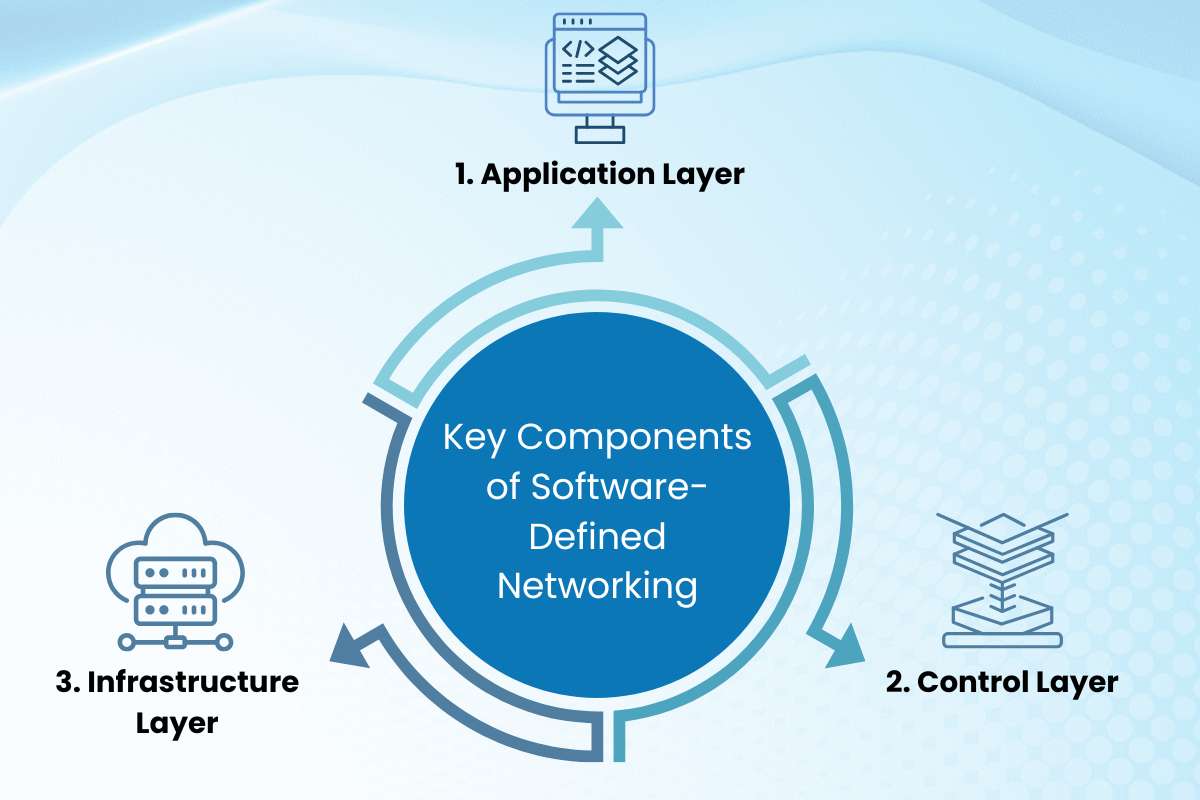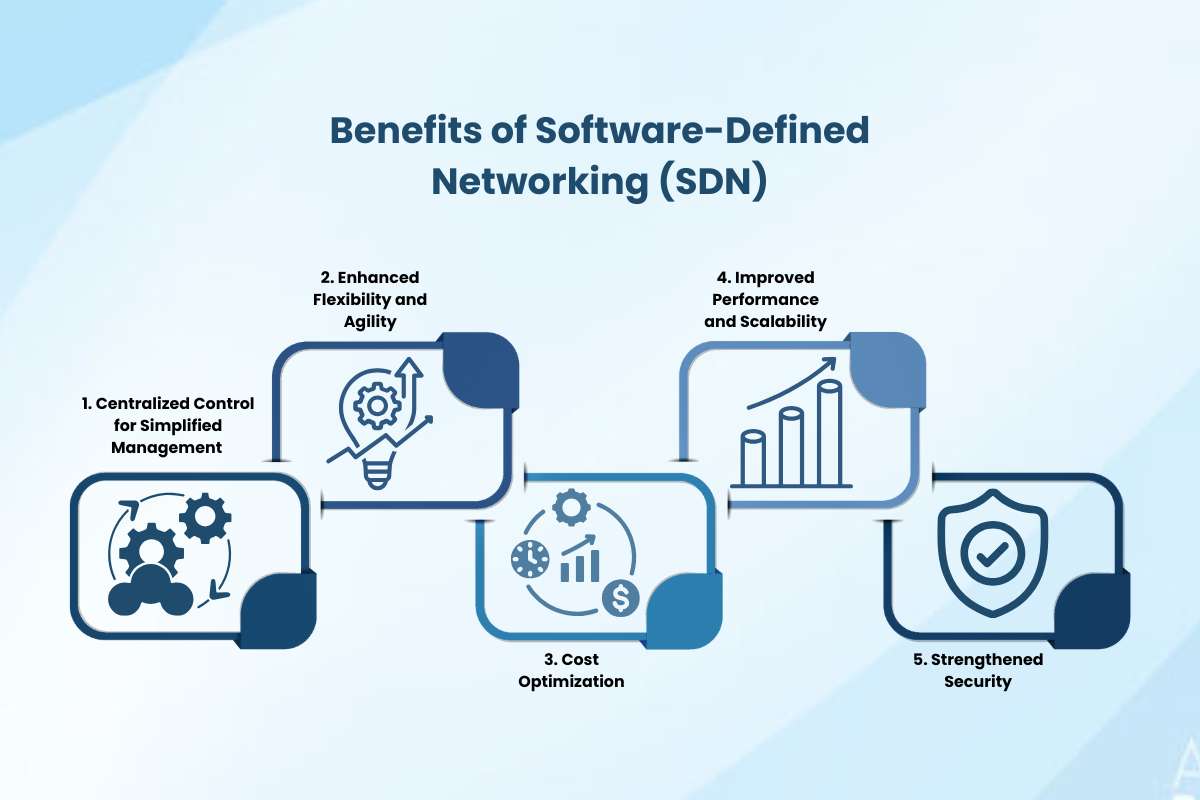A recent report, “Software-defined Networking (SDN) Controller Market 2024,” describes how SDN plays an important role in companies such as Juniper Networks, VMware, Nokia, and Big Switch Networks. Several types of SDN controllers are used in applications across enterprises, cloud service providers, and telecommunications service providers. Now, one might be having a question: what is SDN after all?
This blog will solve all such doubts and explain the definition of SDN, its key components, benefits, and its limitations.
What is Software-Defined Networking (SDN)?
Software-defined networking (SDN) is an innovative technique for network management. SDN uses software-based controllers or APIs to direct the traffic or communicate with hardware infrastructure. This technology controls both physical and virtual networks. SDN helps to keep the network operations smooth. It allows the IT administrators to configure services, allocate resources, and improve data flow through a single interface.
Key Components of Software-Defined Networking

The SDN architecture consists of three primary layers:
1. Application Layer
This layer includes applications and services that communicate with the SDN controller to request specific network behaviors or data paths. The application layer is responsible for implementing the business logic and network functionality required by the companies.
2. Control Layer
The control layer helps the SDN controller to manage the entire network. It helps to make decisions on how traffic should flow across the network and communicates the instructions received by the infrastructure.
3. Infrastructure Layer
The Infrastructure Layer in SDN is useful for handling the physical/virtual devices and the data plane operations. It forwards the data packets through APIs like OpenFlow. This layer helps to analyze the network patterns so that it can improve the network performance. The infrastructure layer is an important component for creating an agile network infrastructure.
Benefits of Software-Defined Networking (SDN)

SDN makes network management flexible and adaptable. Here are some of the benefits:
1. Centralized Control for Simplified Management
SDN separates the control plane from the data plane. It allows centralized network management through a single controller. The centralized network management helps in monitoring and troubleshooting if any network issues occur. This reduces the IT administrative cost and improves the network’s effectiveness.
2. Enhanced Flexibility and Agility
SDN has dynamic allocation and reallocation of resources that may be required on instant needs. This is one of the flexibility provided by SDN. Scaling resources helps to reduce connectivity issues for any new applications or services that it may face in the future.
3. Cost Optimization
SDN reduces operational costs as it automates several tasks, such as configuration and network monitoring. It supports the use of commodity hardware that is less expensive than proprietary devices. This reduces the capital expenditure.
4. Improved Performance and Scalability
SDN improves the network performance through intelligent traffic management and load balancing. These methods provide high-speed network connections to organizations. SDN expands the scalability without creating any issues in operations and helps the organizations to grow.
5. Strengthened Security
SDN improves security controls by using the concept of micro-segmentation. This concept is useful as it helps to separate the good traffic from the malware traffic and implement security policies to protect the organization’s network.
SDN provides an appropriate framework to maintain a modern network infrastructure to keep the organization’s network safe and secure.
Limitations of Software-Defined Networking (SDN)

Software-defined networking (SDN) has several advantages, but some of the disadvantages are as follows:
- It requires a change in the entire network infrastructure to implement SDN protocol and SDN controller. This change increases the operational cost for the company.
- SDN can be more complex than traditional networking systems as it involves several sets of technologies and specialized skills to manage the same.
- The centralized controller is an important component of SDN, but if it fails, the entire network system can go down. This tells us that the organizations need to see to it that the controller is available at all times and has a DR plan for it every month.
- SDN is known for its security, but once it is installed, organizations will be introduced to new security risks. A single point of control is an easy target for attackers, and the programmability of the network could make it easier for attackers/hackers to disrupt the network security.
- Ever heard about vendor lock-in? This technique allows the organization to bring SDN solutions from different vendors, which may not be easy to operate.
- The centralized control of the network in SDN causes delays that may hamper the network performance in some situations.
Final Thoughts
Software-defined networking (SDN) role in developing dynamic, cost-effective, and efficient networks will only grow and should grow as it is the best technology to keep the organization’s network safe. As mentioned in the blog, this technology has advantages and disadvantages, thus organizations need to carefully plan and implement this technology to make use of its benefits.






